collaboration
AI’s Growing Influence: A Call to Action for Multifamily Business Leaders
The rise of artificial intelligence (AI) is no longer a distant prospect—it’s here, reshaping our multifamily industry in real time. As AI’s system becomes increasingly sophisticated, we’re witnessing an old but appropriate term: a paradigm shift in how work is conducted, decisions are made, and value is created. This shift presents incredible opportunities and poses interesting challenges across the industry, not just multifamily.
Recent studies have shown that employees increasingly turn to AI for guidance, often preferring these AI-driven solutions over traditional human management in certain areas. This trend signals a fundamental change in workplace dynamics and demands our immediate attention as business leaders.
The implications of this shift are startling, at least, and terrifying, at worst. On one hand, AI promises enhanced efficiency, data-driven insights, and the ability to tackle complex problems at scale. On the other hand, it raises questions about the changing role of human leadership, the need for new skill sets, and the ethical considerations surrounding AI deployment.
For years, we’ve discussed upskilling and reskilling at length in our video and written content. It’s almost too late at this point. If you have not already, the time is now to dive in full body and harness the power or be left out in the cold.
As multifamily leaders, we cannot afford to be passive observers. We must take proactive steps to harness the power of AI while ensuring that our organizations remain human-centric. Here’s what we need to do:
- Embrace AI as a Complementary Force (Agent or Co-Pilot)
First and foremost, we must shift our perspective. Rather than viewing AI as a threat to human roles, we should see it as a powerful tool that can augment human capabilities. AI excels at processing vast amounts of data, identifying patterns, and performing repetitive tasks precisely. By leveraging these strengths, we can free up our human workforce to focus on areas where they excel—creativity, emotional intelligence, and strategic thinking.
Action item: Conduct an audit of your organization’s processes to identify areas where AI can be effectively integrated to enhance efficiency and decision-making. If necessary, bring in outside help.
- Invest in AI Literacy
To effectively lead in an AI-driven world, business leaders must develop a strong understanding of AI technologies, their capabilities, and their limitations. This doesn’t mean becoming technical experts but gaining enough knowledge to ask good questions, make informed decisions about AI adoption, and communicate effectively with technical teams.
Action item: Develop an AI education program for your leadership team and key decision-makers. This could include workshops, seminars, and hands-on experiences with AI tools. Again, if necessary, bring in outside help.
- Cultivate Human Skills
As AI takes on more analytical and technical tasks, the value of uniquely human skills will increase. Emotional intelligence, creativity, critical thinking, and adaptability will become even more crucial. We must invest in developing these skills in our workforce to ensure they remain relevant and valuable in an AI-augmented workplace.
Action item: Review and update your training and development programs to emphasize human skills that complement AI capabilities.
- Reimagine Management and Leadership
The preference for AI guidance in certain areas challenges traditional management concepts. We must reimagine (don’t like the word, but it fits) leadership roles to focus on areas where human judgment and empathy are irreplaceable—shifting from direct task management to more strategic, mentoring, and facilitative roles.
Action item: Initiate a review of management structures and practices to identify areas where AI can support decision-making and where human leadership needs strengthening.
- Prioritize Ethical AI Development and Deployment
Ensuring ethical use is key as AI systems become more prevalent and influential. We must establish clear guidelines and governance structures to prevent bias, ensure transparency, and maintain accountability.
Action item: Develop an AI ethics framework for your organization, including guidelines for data use, algorithm transparency, and impact assessment.
- Foster a Culture of Innovation and Adaptation
To stay competitive, we must cultivate a culture that embraces change, encourages experimentation (celebrates failure as learning), and values continuous learning. This will enable our organizations to adapt quickly.
Action item: Establish innovation labs or cross-functional teams dedicated to exploring and piloting new AI applications in your business. Don’t go at this alone if you’re new to the AI party. Find a good guide to help. It will save you a ton of time.
- Address the Skills Gap
AI will create new roles and eliminate others. It is incumbent upon us to help our teams navigate this transition. This involves identifying future skill needs, providing retraining opportunities, and supporting employees in developing AI-adjacent skills.
Action item: Conduct a skills gap analysis and develop a comprehensive plan for workforce upskilling and reskilling.
- Collaborate and Share Best Practices
No single organization has all the answers when it comes to navigating the AI revolution. We must foster collaboration within and across the industry to share best practices and collectively shape the future of work in the multifamily space.
Action item: Join or establish industry consortiums focused on AI adoption and its impact on the workforce. NMHC and NAA are good places to start, but you must seek out and find businesses outside the industry from which to draw inspiration.
- Engage with Policymakers
The rapid advancement of AI raises important policy questions around data privacy, algorithmic accountability, and the future of work. As Multifamily leaders, we are responsible for engaging with policymakers to help shape regulations that foster innovation while protecting societal interests.
Action item: Actively participate in policy discussions and advocacy efforts related to AI governance and regulation. Again, NMHC is the place to start.
- Maintain a Human-Centric Approach
We must never lose sight of the human element in our businesses. Our customers, team members, clients, vendor partners, and investors are ultimately human, with needs and expectations beyond what AI can provide. Maintaining a balance between AI and human values is important.
Action item: Ensure that AI initiatives regarding team member satisfaction, customer experience, and organizational culture are always subject to review and change.
The influence of AI in the workplace calls for reimagining the very nature of work, leadership, and value creation. It’s the most important Call to Action (CTA) of our lifetime. As multifamily leaders, we have the opportunity—and the responsibility—to shape this transformation to benefit our organizations, team members, and society.
The time for action is now. We must be bold in our vision and strategic approach and undeterred in our commitment to ethical, human-centric AI adoption. By doing so, we can leverage the best of both human and artificial intelligence to drive the next iteration of business.
Let us embrace this challenge with enthusiasm and determination.
Share this:
The Power of “Yes, And”: Transform Your Conversations
Sponsored by theGuarantors
Imagine you’re in a meeting, ideas flying around, and someone pitches a wild concept. Instead of shutting it down, you respond, “Yes, and…”
This is the principle of “Yes, And.” It’s a tool from improv comedy that is useful in business, too.
When you say “Yes,” you validate the other person’s idea.
It shows respect.
Adding “And” builds on the idea.
It encourages creativity and collaboration.
This principle transforms conflict into cooperation.
Try it in your next conversation. You’ll see immediate results.
Share this:
Lead by Example: The Secret to Transformative Leadership
Effective leadership drives opportunity and success.
Leaders who embody the values they preach inspire their teams.
Open communication builds trust.
It also fosters collaboration.
Team members feel valued.
And motivated.
When leaders lead by example, the entire organization benefits.
Great leaders don’t just tell you what to do; they walk beside you.
Share this:
Shed the Armor: The Power of Vulnerability in Leadership
I’ve seen it countless times: leaders lack vulnerability.
Question: How is that armor serving you?
Many believe showing vulnerability is a weakness.
They don their metaphorical armor, hoping to shield themselves from criticism and failure.
I encourage you to posit that your armor might hold you back and prevent genuine connections and growth.
I believe embracing vulnerability fosters authentic leadership and stronger team connections.
Transparency in leadership builds trust and resilience within your team.
Please reflect on your leadership style and consider shedding that armor to cultivate a more authentic and resilient team dynamic.
"True leadership is not about hiding your flaws, but about revealing your humanity." – Mike Brewer Click To TweetShare this:
Stuck in a Rut? Here’s Why It’s the Key to Success
Everyone, at some point, feels stuck.
We often hit a wall in our multifamily careers and personal lives.
Recognizing this universal experience can lead to greater empathy.
We can develop clear, actionable plans by identifying why we’re stuck.
Understanding that being stuck is part of the growth process empowers us to keep pushing forward.
So, identify where you’re stuck today and take that first step towards breaking free.
Seek fresh perspectives and embrace new strategies.
Ask your team.
Ask your significant other.
Phone (or text) a friend.
Slip into somebody’s DM.
Just take action to find out why!
"Being stuck isn't a setback; it's a setup for your next breakthrough." – Mike Brewer Click To TweetShare this:
- Page 1
- Page 2
- Page 3
- Interim pages omitted …
- Page 5
- Go to Next Page »

